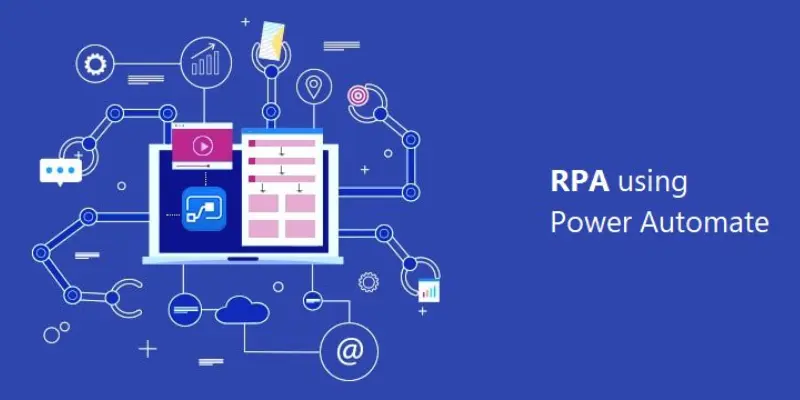Businesses rely heavily on real-time insights to make informed decisions in today’s data-driven world. Power BI, a powerful business intelligence tool by Microsoft, helps organizations visualize and analyze data effectively. However, as data changes frequently, updating dashboards can be time-consuming if done manually. This is where Robotic Process Automation (RPA) comes in to streamline the process. RPA can automate repetitive tasks, such as refreshing data in Power BI, making the workflow more efficient. This blog will explore how RPA can automate data refresh in Power BI and RPA Training in Bangalore can equip you with the skills to implement this automation.
What is RPA in Data Management?
RPA, or Robotic Process Automation, refers to using software robots to automate repetitive, rule-based tasks. In data management, RPA helps organizations automate data extraction, transformation, and updating reports, allowing employees to focus on more strategic tasks. Regarding automating data refresh in Power BI, RPA eliminates the need for manual intervention, saving time and reducing human errors.
Why Automate Data Refresh in Power BI?
Manually refreshing data in Power BI is time-consuming and can also introduce errors. Automating this process with RPA offers numerous benefits, such as improved speed, accuracy, and efficiency. Automating Power BI refreshes ensures that your dashboards are always up to date, providing real-time insights for data-driven decision-making. Start your learning journey at the Power BI Course in Bangalore.
How to Automate Data Refresh in Power BI with RPA
One of the primary challenges in data management is ensuring that dashboards are consistently updated with the latest data. Power BI allows users to refresh data manually, but this process can be automated using RPA. Here’s how RPA can be utilized:
Set up RPA Tools
The first step is to set up an RPA tool like UiPath, Blue Prism, or Automation Anywhere. These tools can directly interact with Power BI to automate the data refresh process. After programming the RPA bot, it automatically logs in to the Power BI service, accesses the necessary reports, and refreshes the data regularly.
Schedule and Trigger Data Refresh
The RPA bot can be programmed to trigger data refreshes at specific intervals. For example, if your sales data is updated daily at 6 AM, the RPA bot can refresh the Power BI dashboard by 7 AM, ensuring your team has the latest data. Learning to schedule and manage these tasks is a critical part of the curriculum at leading Training Institutes in Bangalore offering comprehensive RPA and Power BI courses.
Monitor and Log Errors
Another advantage of using RPA is its ability to monitor the entire data refresh process. If there are any issues—such as connection errors or missing data—the bot can log these problems and send notifications to the appropriate team.
What is Power BI Dashboard and its Examples? A Power BI Dashboard is a visual representation of data, offering key insights through interactive charts and reports. Examples include sales performance dashboards, financial analytics, and customer engagement reports, helping businesses make data-driven decisions efficiently.
Key Considerations When Implementing RPA for Power BI
While RPA offers a range of benefits, it’s essential to plan and implement it properly. Businesses should choose the right RPA tool, train their teams on RPA workflows, and ensure seamless integration with Power BI. Proper configuration and testing are crucial to avoid potential glitches.
Benefits of Automating Data Refresh with RPA
Scalability
RPA can easily handle increasing amounts of data as your business grows. Scaling up your Power BI dashboards becomes more manageable and efficient with RPA, making this a valuable skill taught in Power BI Training in Marathahalli.
Time Efficiency
Businesses can save significant time by automating the data refresh process. Employees no longer have to manually refresh Power BI dashboards, allowing them to focus on analyzing the data rather than managing it.
Improved Accuracy
Human errors in manual data refreshes can lead to inaccurate information in reports. RPA eliminates this risk by ensuring consistent and accurate updates and providing reliable data for decision-making.
Cost Savings
Automating routine tasks like data refreshes with RPA can reduce the need for manual labour, cutting down operational costs. Companies can also reduce the risk of costly errors caused by outdated data in business reports.
RPA is a game changer for companies looking to automate repetitive tasks, such as data refreshes in Power BI. By integrating RPA with Power BI, businesses can boost efficiency, reduce errors, and save money. Whether you’re dealing with small datasets or large volumes of data, automating the refresh process ensures that your dashboards are continuously updated with the latest information. RPA Training in Marathahalli can help you acquire the necessary skills to effectively utilize RPA for data automation in Power BI, keeping you ahead of the competition.
